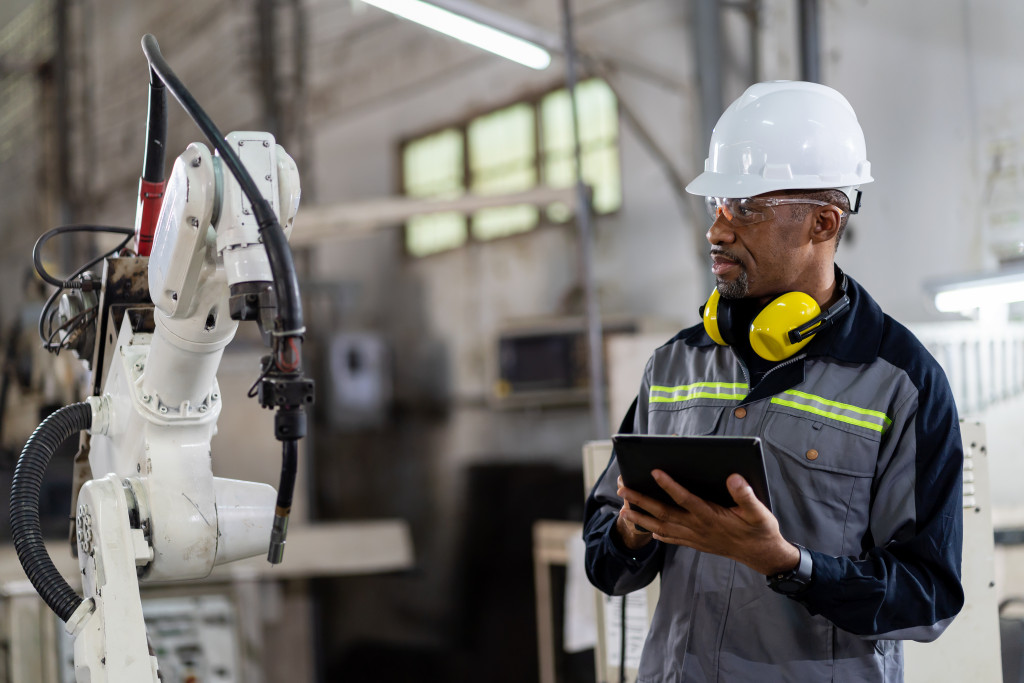Manufacturing can be a very laborious process, especially when utilizing traditional methods. These methods can be slow and inefficient, often wasting time and resources. To keep up with the demands of modern consumers, manufacturers must find ways to optimize their processes and improve efficiency.
Companies can do this by using new technologies and innovative methods, which can help reduce the amount of time and labor required for production. By streamlining their operations, manufacturers can improve their bottom line and meet their customers’ needs better. Here are a few things that can help you.
Automation of Processes

The manufacturing industry has seen a massive increase in automation over the past few decades. The latest feature has helped improve efficiency and reduce the labor required for production. Automated processes are much faster and more accurate than manual methods and can be adapted to suit various needs.
The most common automated processes include welding, assembly, and packaging. Automation has helped to speed up these operations and improve their accuracy. It has also allowed manufacturers to produce a broader range of products with fewer errors. Manufacturing workers find their jobs more efficient and easier to complete when automated processes are in place.
There are concerns about automation taking away jobs from manufacturing workers. However, this is not the case. Automation has created new opportunities for employment in the manufacturing industry. It has also helped improve worker safety by reducing their need to perform dangerous tasks.
Use of Robotics
Robotics has become increasingly commonplace in manufacturing over the past few years. Manufacturers can use these machines for various tasks, such as welding, fabricating, and assembly. Robotics offers many benefits over traditional methods, including increased speed, accuracy, and safety.
Robots can work tirelessly for long hours without tiring and make exact movements. It helps improve the quality of products and reduces the amount of waste produced. Additionally, manufacturers can program robots to work in hazardous environments, which helps to keep workers safe.
However, robots are not perfect. They can be expensive to purchase and maintain. They also require a high level of training to operate effectively. Nevertheless, robotics is an essential part of the modern manufacturing process and will continue to play a vital role in the industry’s future.
Implementing Lean Manufacturing Methods
Lean manufacturing is a methodology that focuses on reducing waste and maximizing efficiency. Lean manufacturing aims to produce the highest quality product with the least resources. You can achieve it by eliminating unnecessary steps in the manufacturing process and streamlining operations.
The benefits of lean manufacturing include reduced production costs, shorter lead times, and improved product quality. Additionally, lean methods can help to reduce environmental waste and improve worker safety. Many manufacturers are now implementing lean manufacturing methods to help improve their bottom line.
Use of 3D Printing
3D printing technology is becoming increasingly popular in the manufacturing industry. This technology allows manufacturers to produce products quickly and cheaply without using traditional manufacturing methods. 3D printing can create prototypes and small batches of products. It is also being used more frequently for mass production.
However, 3D printing remains limited in application and is not suitable for all manufacturing processes. Nevertheless, it is a promising technology that can help improve efficiency in the manufacturing industry.
Overall Equipment Effectiveness
Overall Equipment Effectiveness (OEE) is a metric that helps measure manufacturing processes’ efficiency. It takes into account three factors: availability, performance, and quality. OEE can help manufacturers identify areas where they need to improve their processes.
Additionally, OEE can help benchmark the performance of different manufacturing plants. By tracking OEE, manufacturers can compare their operations and strive to improve their overall efficiency. Fortunately, OEE solutions are readily available and can help streamline manufacturing. The outsourced team can provide valuable insights into your manufacturing data and suggest ways to improve OEE.
OEE ensures that all the technological advancements discussed are to their fullest potential. It is a simple yet effective way to increase efficiency and optimize productivity.
Use of Artificial Intelligence
Artificial intelligence (AI) is another technology used in manufacturing. AI can help automate tasks, such as quality control and material handling. Additionally, manufacturers can use AI to predict customer demand and market trends. This information can help manufacturers adjust their production accordingly.
The benefits of using AI in manufacturing include increased speed, accuracy, and flexibility. Additionally, AI can help reduce costs by eliminating the need for manual labor. Many manufacturers are now beginning to implement AI into their operations.
Final Thoughts
As the world progresses, so does technology – especially in the manufacturing industry. The manufacturing industry is under constant pressure to improve efficiency and productivity. To meet the demands of modern consumers, manufacturers must find ways to optimize their processes. Fortunately, these advancements in technology can help.





